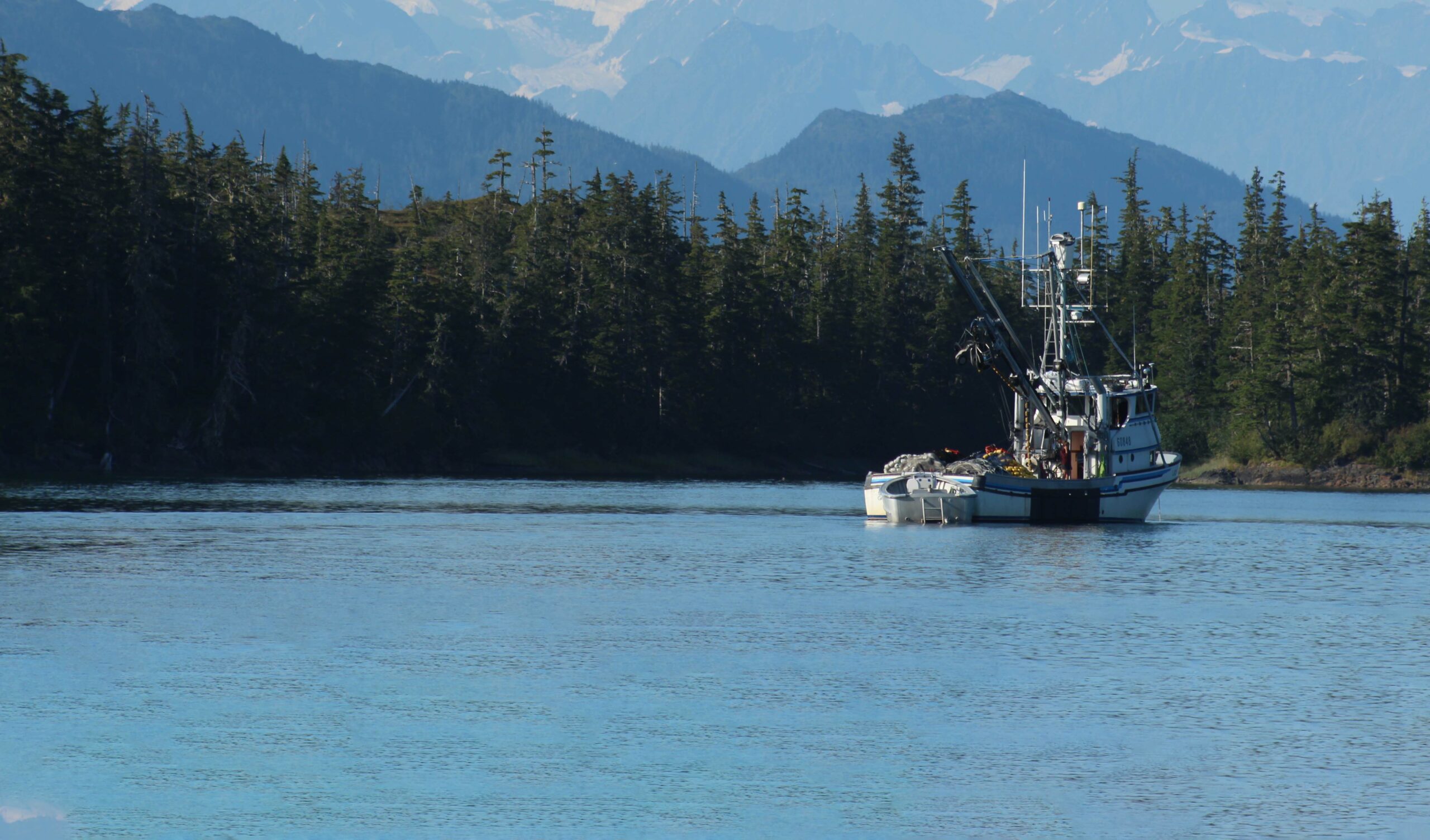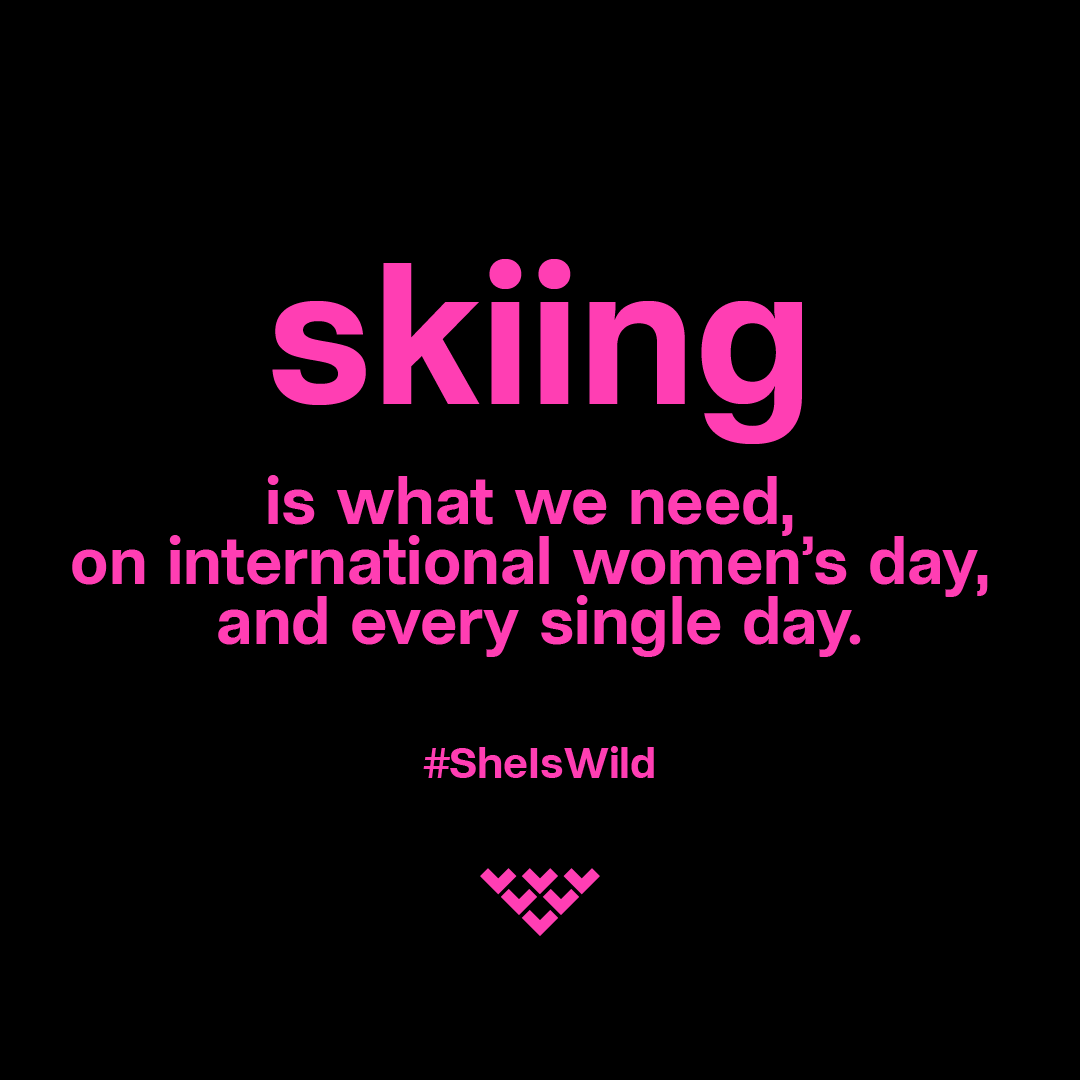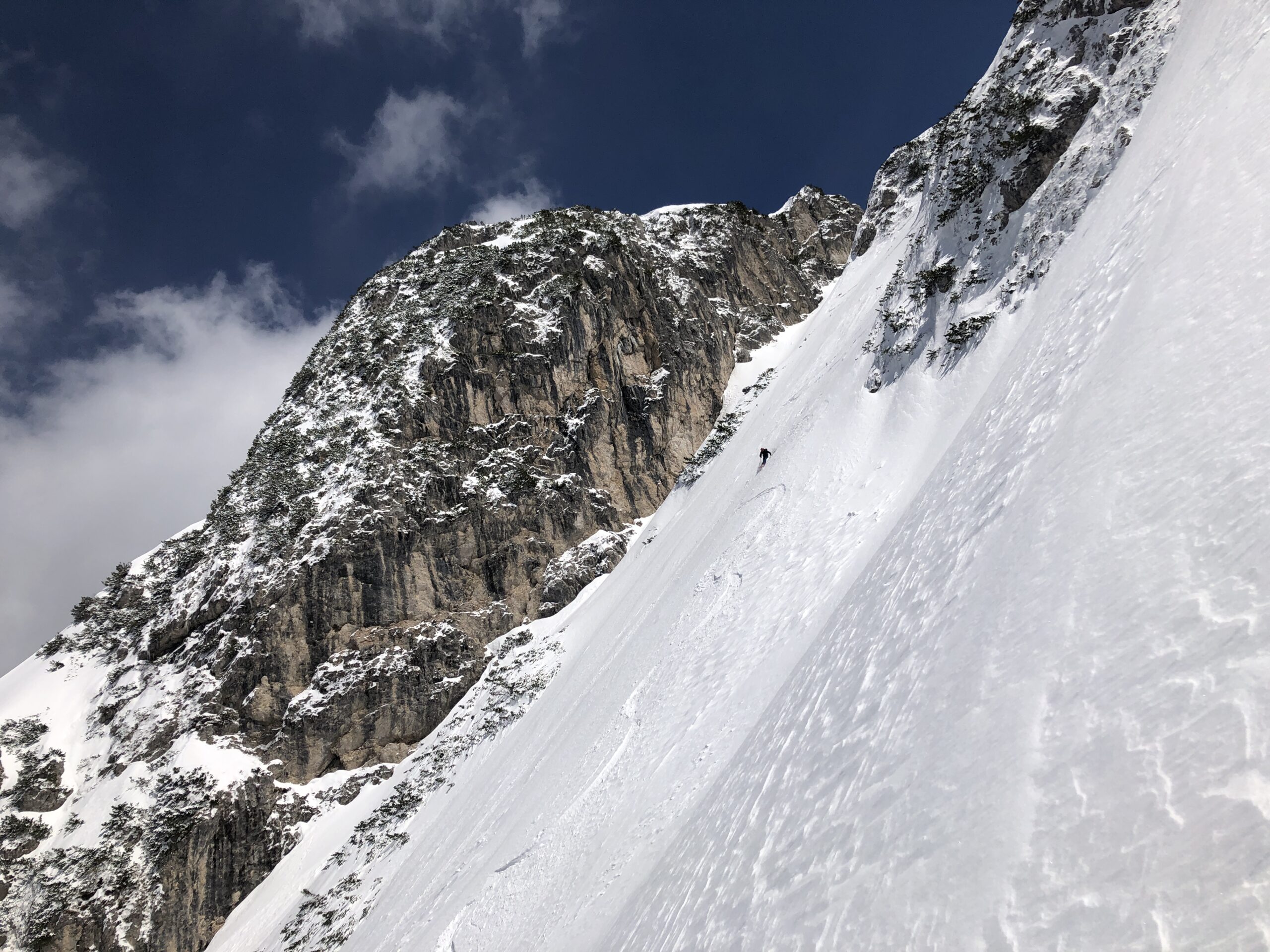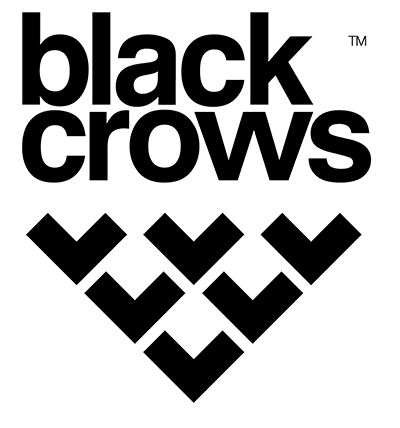20 years on from the feat of his hero Marco Siffredi, Jules Berger who was 5 years old at the time, set out to repeat a mythical, almost inaccessible backyard line in the Mont Blanc massif, recounting a day like no other with imposing seracs, loose rocks, perspiration and high-altitude bird calls to boot.
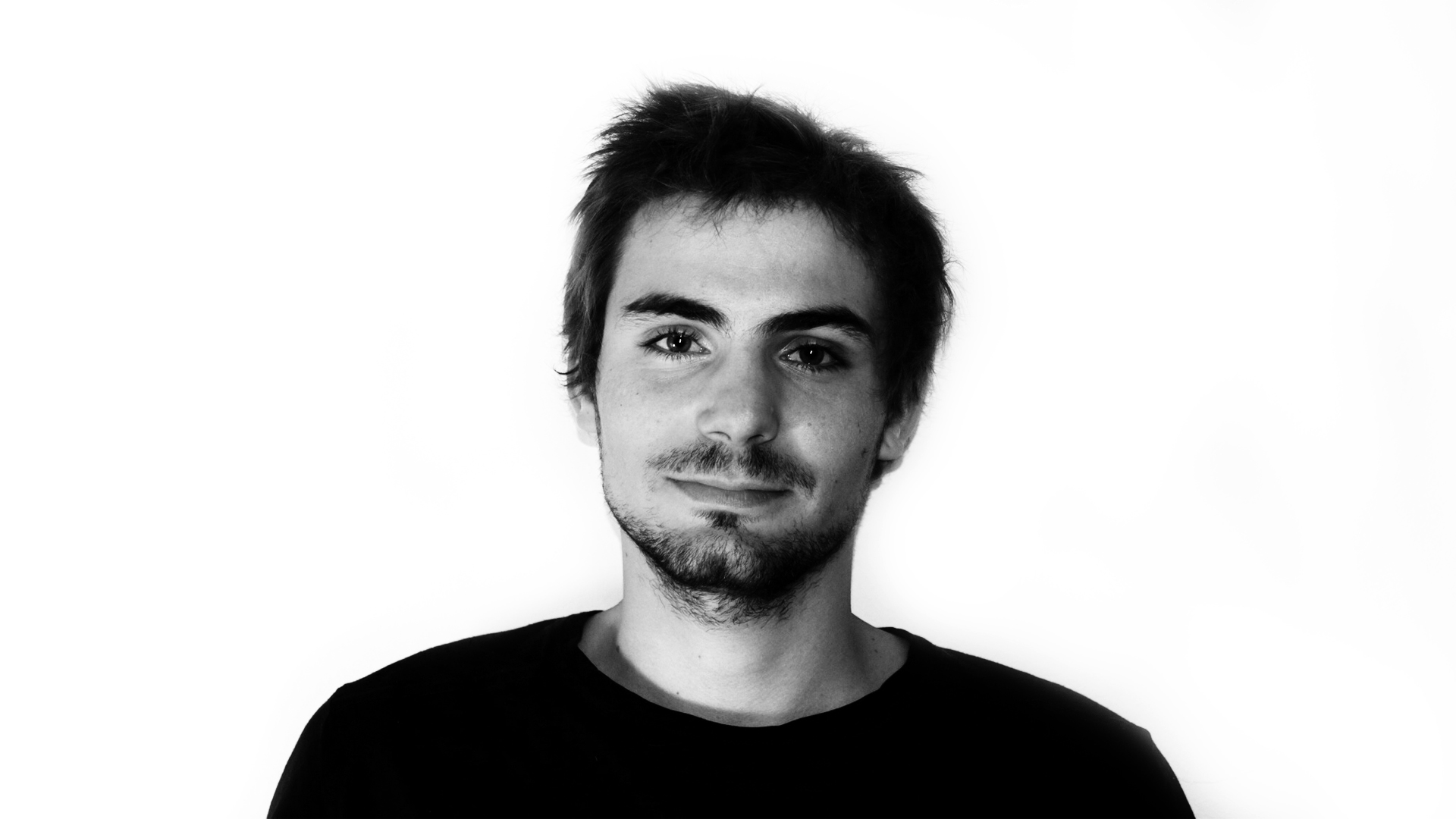
What did you know about the Cordier before going? What were your reference points?
L’Aiguille Verte, where this couloir is located, is a major summit of the Mont Blanc range and it’s the mountain that was right above our house when I was small!
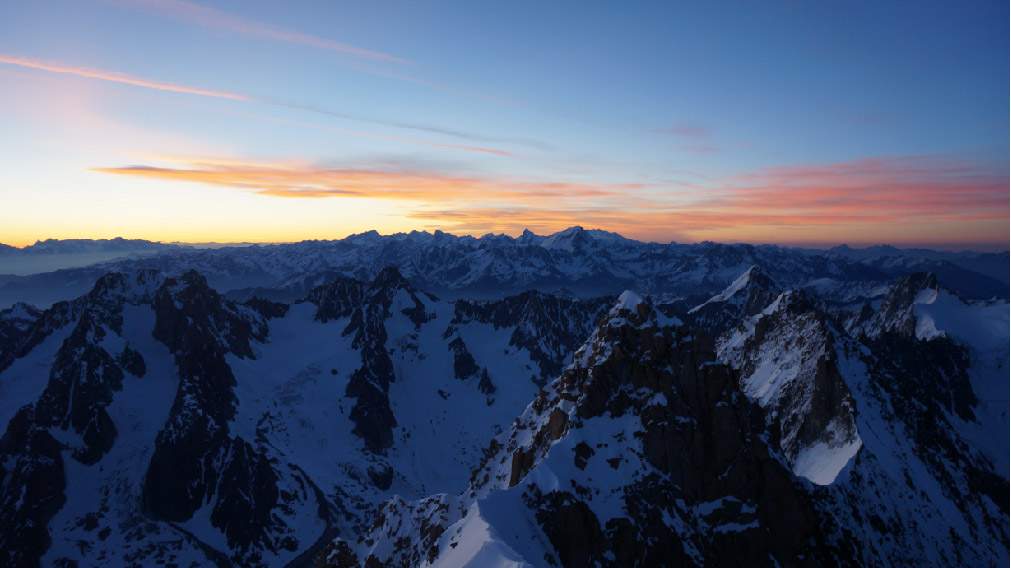
I’ve known about the Cordier for a long time, but more as a grim, threatening place: you just have to look at the number of accidents related to serac falls in this couloir…In the beginning, I predominantly felt a lot of distrust for this run, then in my teenage years, I started to become interested in steep skiing with my friends. Marco Siffredi was a role model for young Chamoniards like us and we were quickly impressed by the shots of his descent of the Cordier in June 2000. My view of it changed at that moment and the Cordier went from “dangerous and unattainable” to “secret, unconfessable project”!
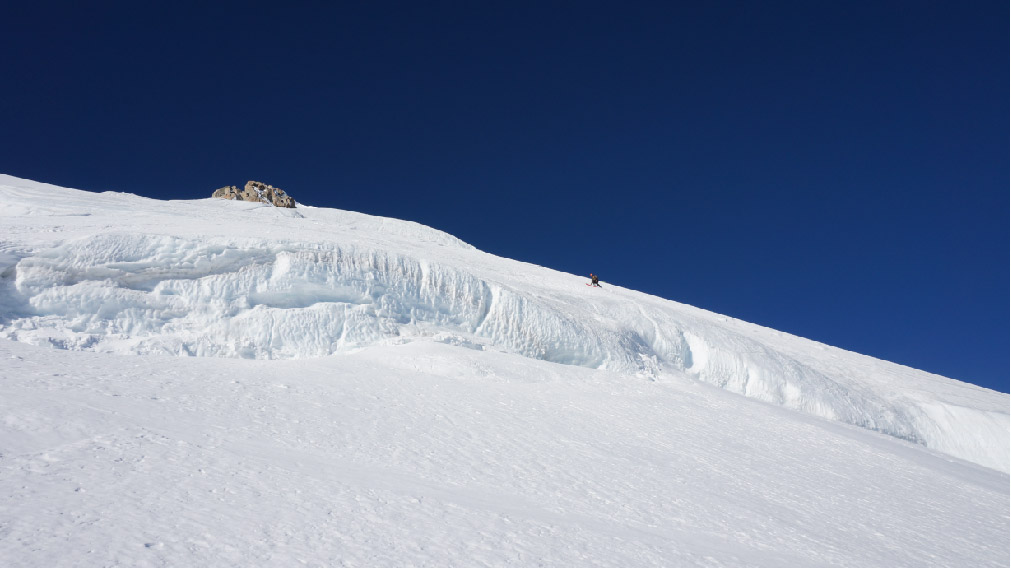
How did you tackle a steep slope of such magnitude? Were you checking the conditions for three days or were you called the day before with a plan on a plate?
I’d been looking at the Cordier regularly since 2013 but the rock band that separates the ice cap of the Aiguille Verte and the couloir offered no way through and I had no desire to ski a different line to Marco’s. Patience is the main virtue for a steep skier and we had to wait until this winter for a way through to appear…
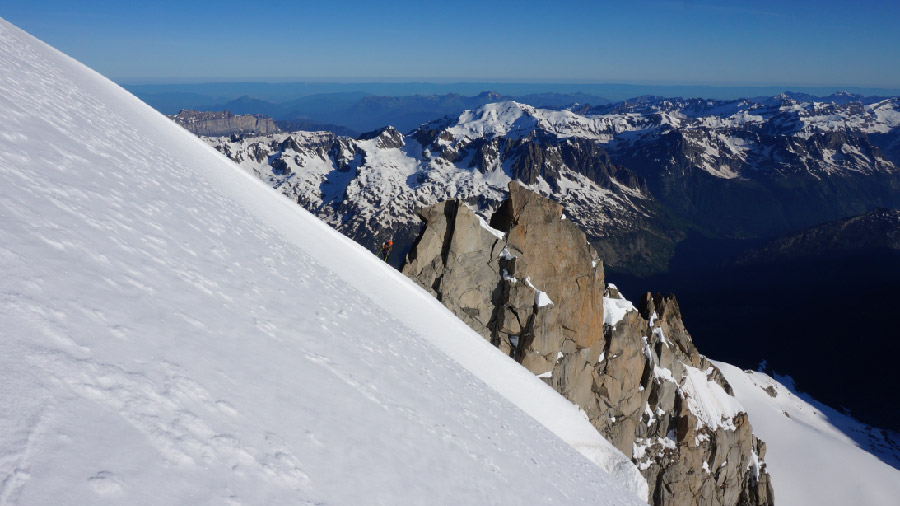
In the last two winters, I skied a lot with Pierre Esspieusas. He’s a ski patroller like me and a great alpinist as well so steep skiing came naturally for him and he’s a first-choice partner to calmly think through a descent of this kind!
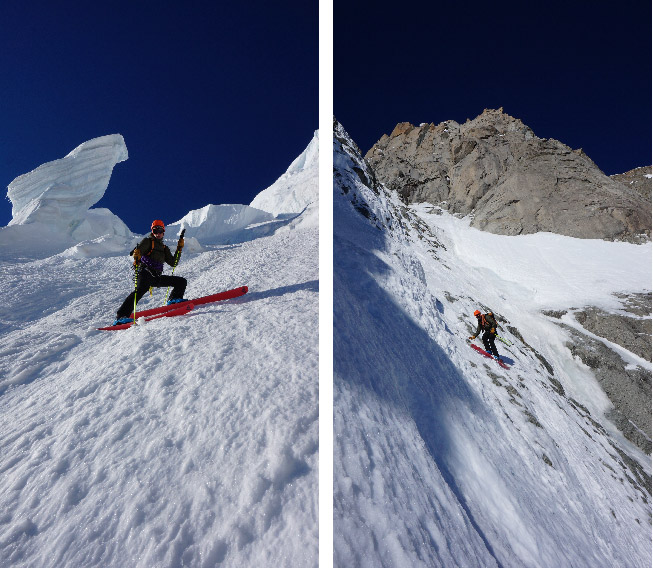
Throughout the winter we regularly examined the conditions, I took lots of photos from the opposite side to really take in the line. At the start of June, the conditions were optimal, some friends had skied the neighboring Couturier couloir in excellent conditions and we had to use the good weather window we had. We decided to go kind of at the last minute…
It’s often the same process that you apply when something is a bit committing: lots of monitoring and patience.
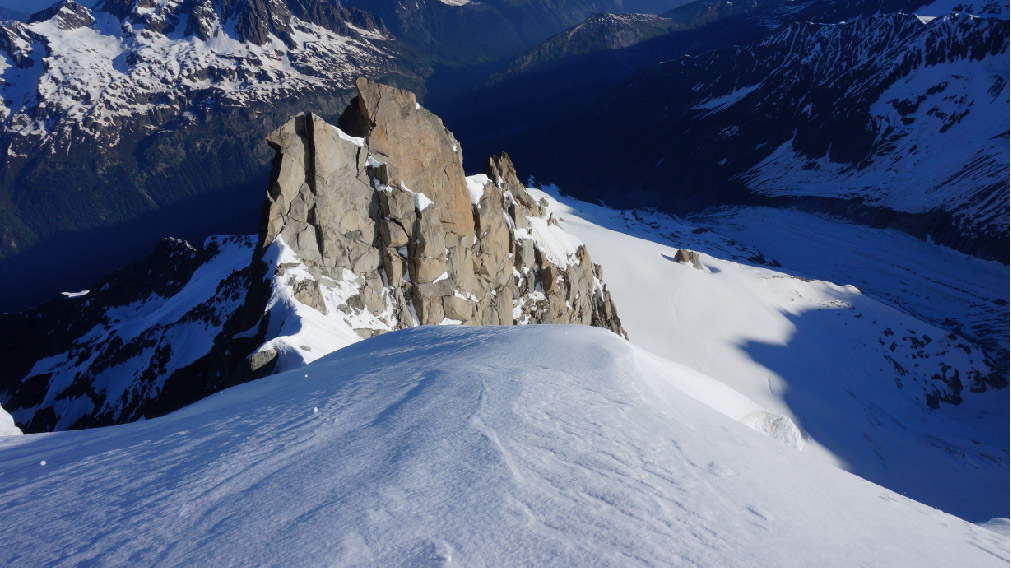
“When you prepare your equipment the excitement starts to mount, the doubt as well, and the mix of the two is quite special.”
Can you tell us about the day before? What did you put in your bag, how do you get ready for a descent like that?
Pierre and I both worked in the week so we didn’t have much time to prepare the equipment or layout an exact plan. I was doing landscaping and he’s a rope access guy from mid-April to the start of July, right in the middle of the steep season but that didn’t stop us from doing some nice runs. We had Saturdays and Sundays free so we had to go along with that and the advantage to working during the week is that you don’t have too much time to think about it beforehand! The Saturday morning I prepared my bag knowing that we had 2000m to ascend to our bivouac, and 1000m the following day so it had to be light but with enough gear for this kind of descent.
When you prepare your equipment the excitement starts to mount, the doubt as well, and the mix of the two is quite special. I pretty much pack the same bag for each outing with all the alpinism equipment but different rope lengths depending on the place. This time we had to also take our bivouac stuff and food which made things quite a lot heavier…
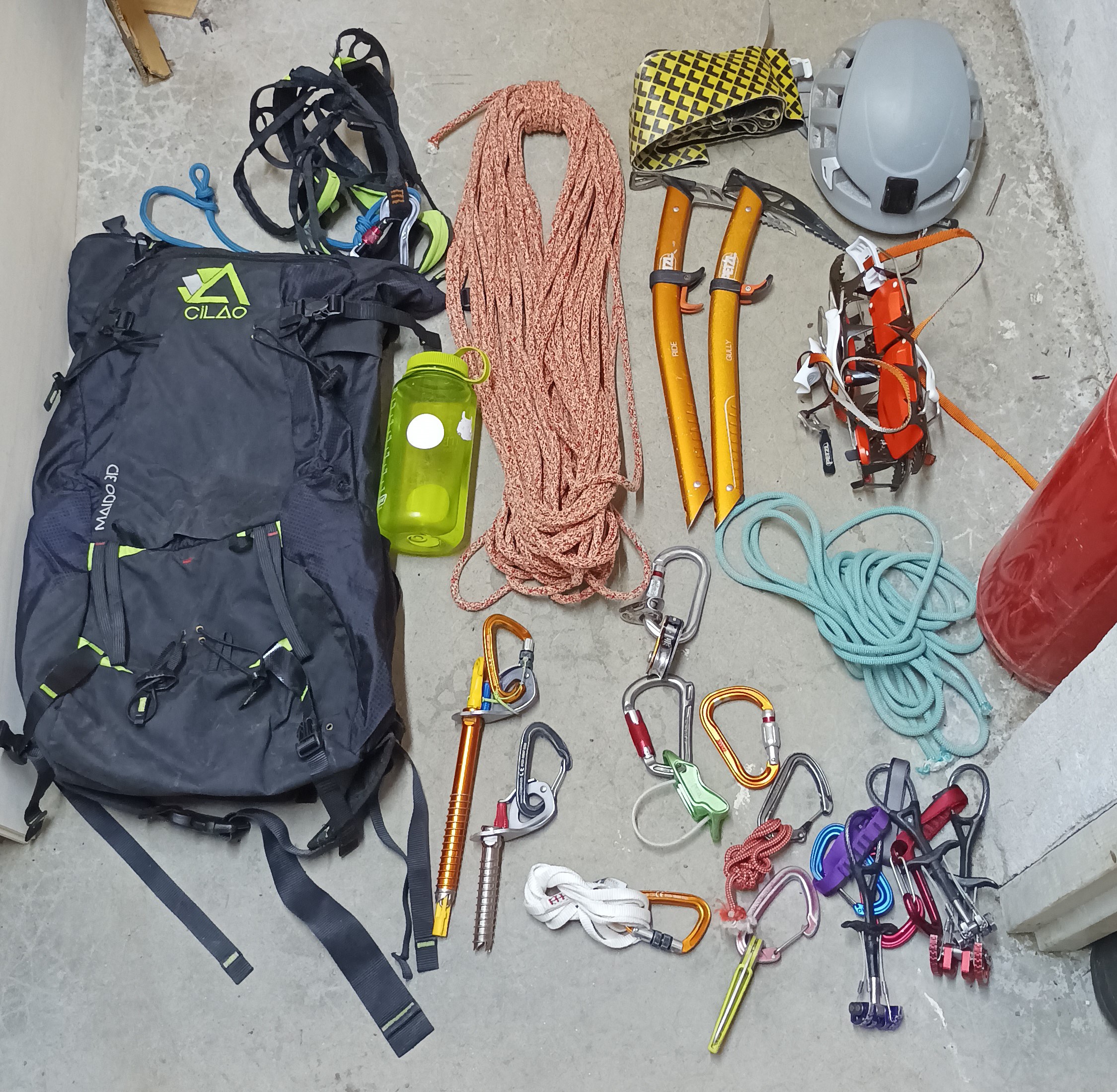
“We found ourselves at the summit too early! We had the luxury of a one-hour nap on our bags.”
How did the day pan out? Any strong weather to report?
On the way up to the old Grands Montets cable car station, we could see the couloir as we skinned and we were reassured because it looked really white. We arrived at our bivouac point with optimism. The night is never that good before a descent like that, it’s difficult to get to sleep and 10pm-1am hardly counts as a lie-in!
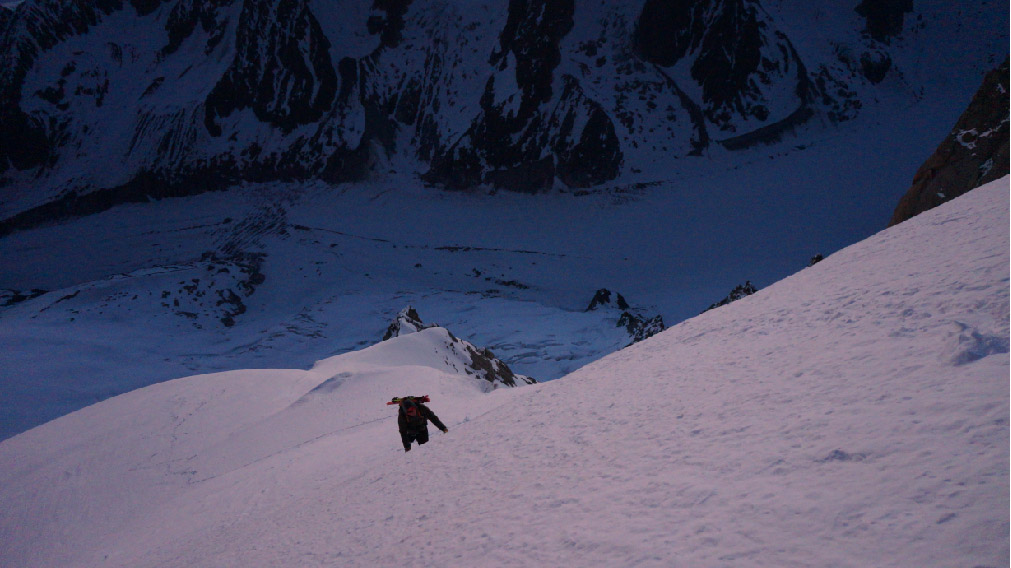
When the alarm clock rang, doubts disappeared and we left the bivouac determined and excited. The approach went without drama but we decided against going directly up the Cordier, to avoid being under the exposure of the seracs for too long. So we opted to go up the Couturier instead, leaving most of our equipment at the bottom, keeping the least we could, a liter of water, a down jacket, two bars, and 40m of rope each. It was such a joy: the conditions were good, we were in form and in 2 hours 20 we had climbed the 1000m couloir. We found ourselves at the summit too early! We had the luxury of a one-hour nap on our bags and enjoyed a superb sunrise for half an hour.
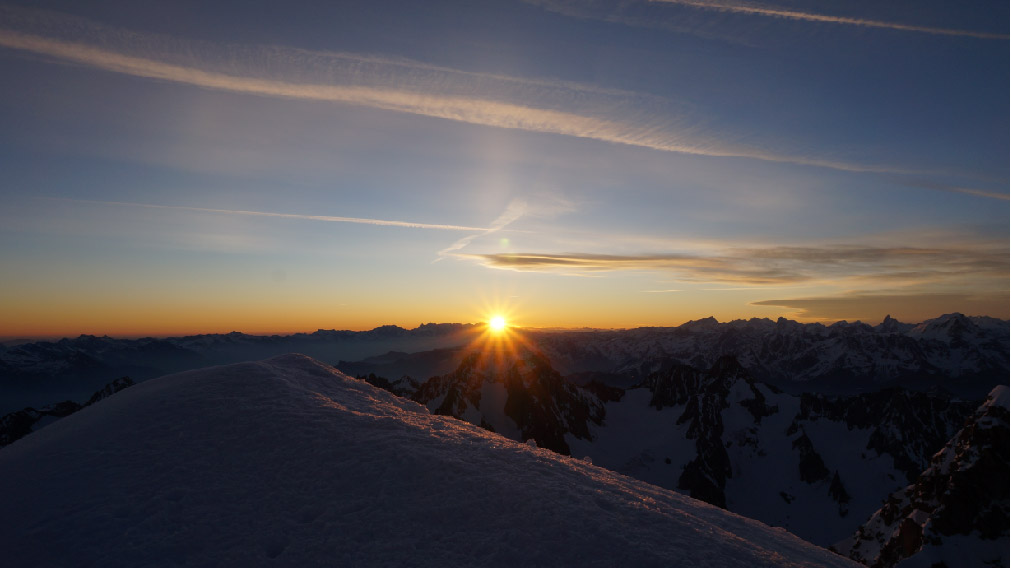
The tension became palpable when it came to getting ready. No more words, each in our own bubble, we spent 10 minutes getting ready and putting our skis on.
The descent is all about concentration and technique but it’s pretty exhilarating. I didn’t think I’d feel such a strong sense of exposure and commitment. It was still early morning: we started skiing at 7am, one part of the line was already in the sun and small rocks were tumbling down the couloir. The sections still in the shade were smooth and solid so really required our full attention. Halfway down the couloir, we made a 45m rappel, the only moment of respite for our legs.
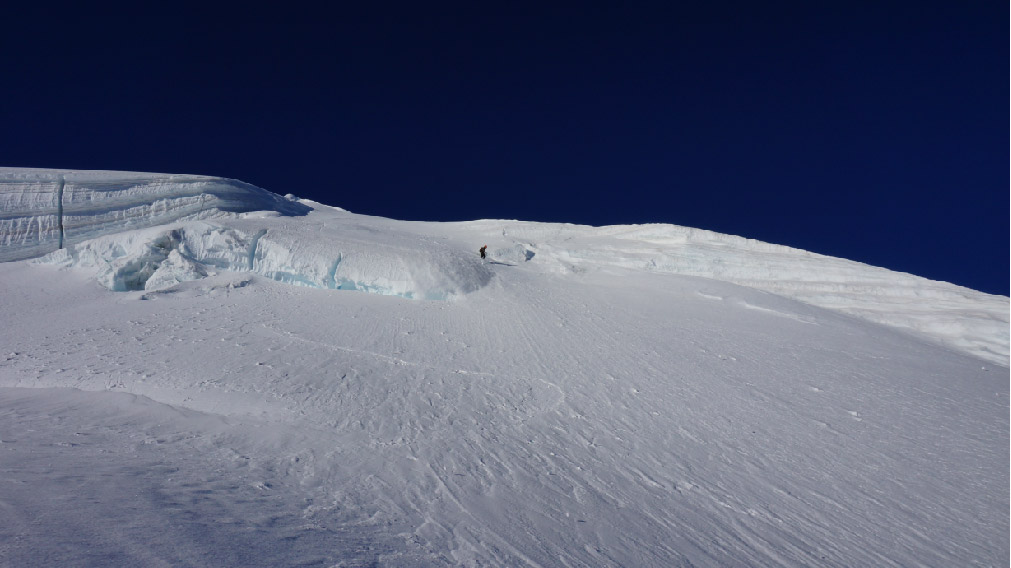
The lower part is still steep but the exposure is less so we skied the final section together. Once the rimaye was cleared, the tension was released and we hugged for joy, in total satisfaction! At that moment we couldn’t fully grasp the magnitude of the descent we’d just done and I tend to say that emotions are infused internally, time is required to fully feel this descent.
“Halfway down the couloir, we made a 45m rappel, the only moment of respite for our legs.”
Fear of the slope: it must come at some point or another, before, during, or after? What else?
Never during, more retrospectively, remembering a certain passage or atmosphere. After, yes, with a bit of pride I must admit!
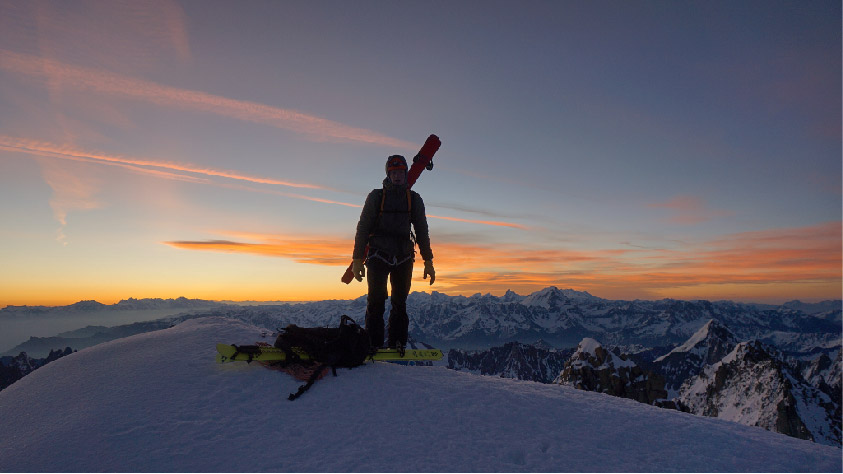
It was exactly the same line as Marco Siffredi did in 2000 if you look at the tracks, but in terms of snow and with the conditions having changed, what did that bring?
The Cordier is nothing like it was when it was opened by Yves Détry in 1977. In those days it was a big snowy slope, it looked a bit like the Couturier, Anselme Baud has done it twice without a rappel…Nowadays, even if you try to minimise the length of rappel, the rock band in the middle is not passable, except if you get really special conditions throughout the whole season with tons of snow and no wind. With the climate changing, the Aiguille Verte’s ice cap has pushed, more and more threatening seracs have appeared and the couloir has become narrower. If you look at pictures of the first descent, it ‘goes’ everywhere, there’s snow everywhere, the glacier is huge and magnificent. Now it doesn’t look like that at all but like anywhere you go steep skiing there are lines that are now on which used to be unskiable, because there are no more seracs or glacier, and vice-versa.
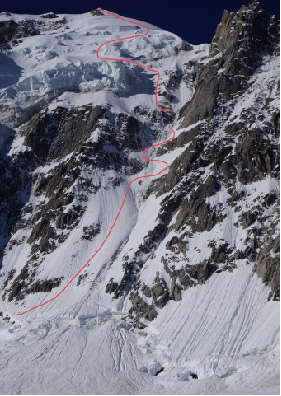
No one had done this line since Marco Siffredi on his snowboard in 2000. There were some Swedes in 2018 who did the neighboring line with 4 rappels but more by chance, they had set out for the Nant Blanc which turned out to be a no-go. This is where having patience comes into play, if you have the means at your disposal to follow the development closely, you can strike when conditions are optimal.
Last year the seracs were falling constantly, we rode the Couturier and saw 5 or 6 serac falls. But this year it had completely stabilised, there weren’t even any deposits at the bottom.
The atmosphere is quite incredible, it has it all: steep slope, exposure, seracs, rockfalls, hard snow on one side and quickly transforming on the other, add to that the pressure of the timing and it’s really intense.
“No one had done this line since Marco Siffredi on his snowboard in 2000.”
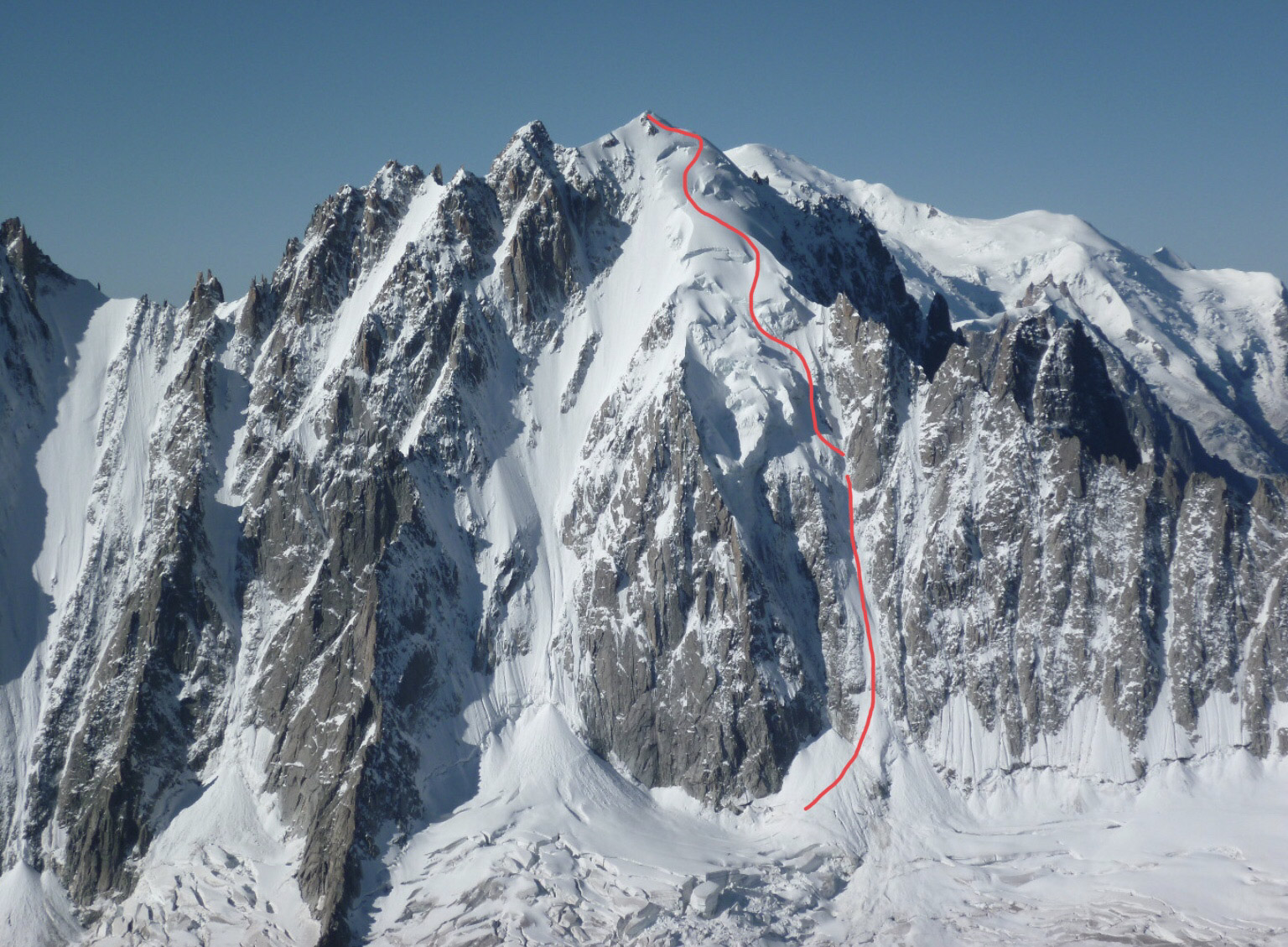
What affect has doing this descent had on you: you’ve ticked something off, would you want to do it again someday?
Above all I’ve fulfilled a dream, maybe I’ll return but it’s not top of the list because there are so many other lines I dream about, now I’m going to concentrate on another one. I think we will see skiers again in the Cordier, maybe not every year but now there has been a successful descent…Just two days after us Vivien Bruchez was stumped because conditions had changed, the freezing level had shot up.

The paradox of steep skiing is that it always ends up on the flat. What’s on your list for the future then?
Yes, I never thought of it like that! The list is long, lots of faces interest me but I’m going to continue to ski on the Aiguille Verte, there are still three descents that I haven’t done. Only Jean-Marc Boivin has skied the 5 couloirs (Whymper, Couturier, Cordier, Nant Blanc, and the Y), Marco was missing the Y, there are three left for me and this is still a strong objective but I’m in no rush. There are loads of lines in this range, no need to go to the ends of the earth. After the Brenva spur last year, I’m looking at the big lines that were opened up but never repeated on the Italian side of Mont Blanc like the Sentinelle Rouge or the Grand Pilier d’Angle.
To finish up, do you prefer steeps or powder? Given that it’s rare to have both…
It all depends who I’m skiing with! I do have a soft spot for the steep though and who knows, with a bit of luck there is still a chance of skiing steep slopes in powder.
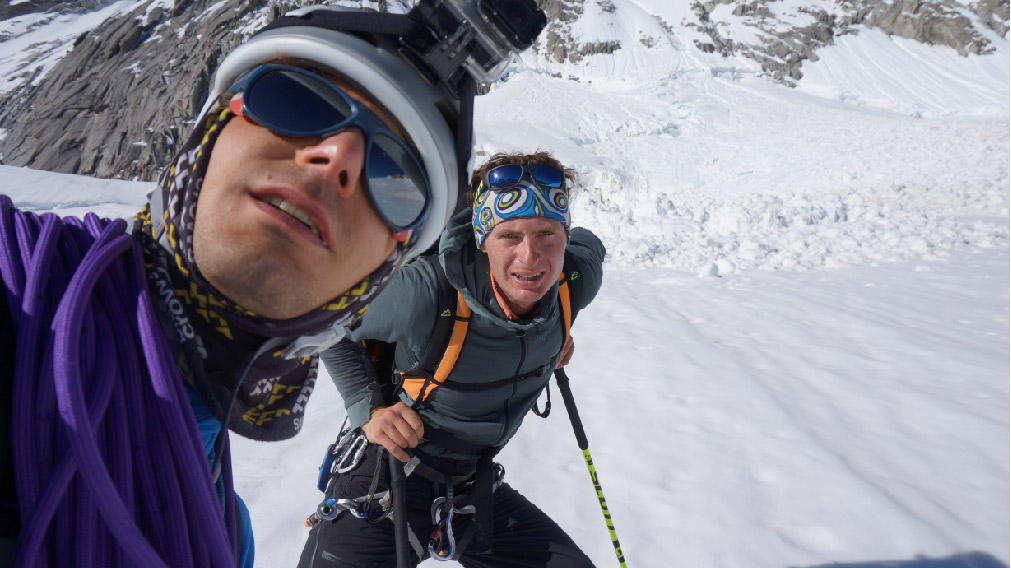
interview by Mathieu Ros.
